
Belvoir Castle is a faux historic castle and stately home in Leicestershire, England, situated 6 mi (10 km) west of the town of Grantham and 10 mi (16 km) northeast of Melton Mowbray. A castle was first built on the site immediately after the Norman Conquest of 1066 and has since been rebuilt at least three times. The final building is a grade I listed mock castle, dating from the early 19th century. It is the seat of David Manners, 11th Duke of Rutland, whose direct male ancestor inherited it in 1508. The traditional burial place of the Manners family was in the parish church of St Mary the Virgin, Bottesford, situated 3 mi (5 km) to the north of the Castle, but since 1825 they have been buried in the ducal mausoleum built next to the Castle in that year, to which their ancient monuments were moved. It remains the private property of the Duke of Rutland but is open to the general public.
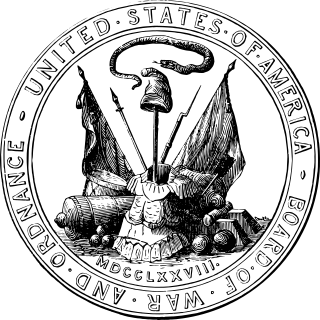
The Continental Army was the army of the United Colonies representing the Thirteen Colonies and later the United States during the American Revolutionary War. It was formed on June 14, 1775 by a resolution passed by the Second Continental Congress, meeting in Philadelphia after the war's outbreak. The Continental Army was created to coordinate military efforts of the colonies in the war against the British, who sought to maintain control over the American colonies. General George Washington was appointed commander-in-chief of the Continental Army and maintained this position throughout the war.

Duke of Rutland is a title in the Peerage of England, named after Rutland, a county in the East Midlands of England. Earldoms named after Rutland have been created three times; the ninth earl of the third creation was made duke in 1703, in whose family's line the title continues. The heir apparent to the dukedom has the privilege of using the courtesy title of Marquess of Granby.

Lieutenant-General John Manners, Marquess of Granby was a British Army officer, politician and nobleman. The eldest son of John Manners, 3rd Duke of Rutland, as he did not outlive his father and inherit the dukedom, Manners was known by his father's subsidiary title, Marquess of Granby. He served in the military during the Jacobite rising of 1745 and the Seven Years' War, being subsequently rewarded with the post of Commander-in-Chief of the Forces. Manners was popular with the troops who served under him and many British pubs are still named after him today.

Field Marshal John Griffin Griffin, 4th Baron Howard de Walden, 1st Baron Braybrooke, , KB, of Audley End in Essex, was a British nobleman and soldier. He served as a junior officer with the Pragmatic Army in the Netherlands and Germany during the War of the Austrian Succession. After changing his surname to Griffin in 1749, he commanded a brigade of at least four battalions at the Battle of Corbach in July 1760 during the Seven Years' War. He also commanded a brigade at the Battle of Warburg and was wounded at the Battle of Kloster Kampen.

Charles Manners, 4th Duke of Rutland was a British politician and nobleman, the eldest legitimate son of John Manners, Marquess of Granby. He was styled Lord Roos from 1760 until 1770, and Marquess of Granby from 1770 until 1779.

The 29th (Worcestershire) Regiment of Foot was an infantry regiment of the British Army, raised in 1694. Under the Childers Reforms it amalgamated with the 36th (Herefordshire) Regiment of Foot to become the 1st Battalion, the Worcestershire Regiment in 1881.
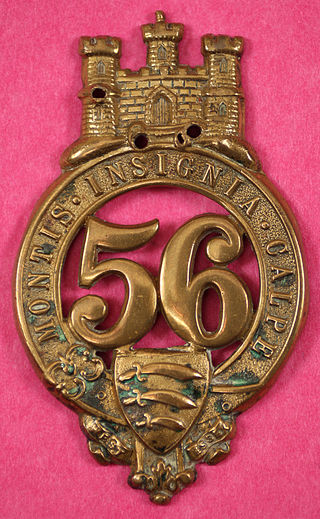
The 56th Regiment of Foot was an infantry regiment in the British Army, active from 1755 to 1881. It was originally raised in Northumbria as the 58th Regiment, and renumbered the 56th the following year when two senior regiments were disbanded. It saw service in Cuba at the capture of Havana in the Seven Years' War, and was later part of the garrison during the Great Siege of Gibraltar in the American Revolutionary War. During the French Revolutionary Wars it fought in the Caribbean and then in Holland. On the outbreak of the Napoleonic Wars the 56th raised a second battalion in 1804 as part of the anti-invasion preparations; both saw service in India and in the Indian Ocean, with the first capturing Réunion and Mauritius. A third battalion was formed in the later years of the war, but was disbanded after a brief period of service in the Netherlands.

The 36th (Herefordshire) Regiment of Foot was an infantry regiment of the British Army, raised in 1701. Under the Childers Reforms it amalgamated with the 29th (Worcestershire) Regiment of Foot to form the Worcestershire Regiment in 1881. Its lineage is continued today by the Mercian Regiment.
The 130th Regiment of Foot was an infantry regiment of the British Army, created in 1794. After being raised it was sent to the West Indies, where it suffered heavy losses from tropical disease. The unit was disbanded at Santo Domingo in 1796, with the survivors drafted into other regiments.
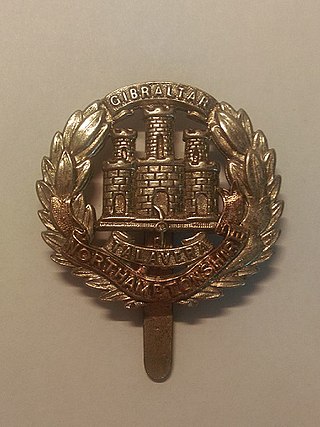
The Northamptonshire Regiment was a line infantry regiment of the British Army in existence from 1881 until 1960. In 1960, it was amalgamated with the Royal Lincolnshire Regiment to form the 2nd East Anglian Regiment, which was amalgamated with the 1st East Anglian Regiment, the 3rd East Anglian Regiment and the Royal Leicestershire Regiment to form the present Royal Anglian Regiment.
The 99th Regiment of Foot (Jamaica Regiment) was an infantry regiment of the British Army, raised in 1780 by Charles Rainsforth and disbanded in 1783.
The 58th (Rutlandshire) Regiment of Foot was a British Army line infantry regiment, raised in 1755. Under the Childers Reforms it amalgamated with the 48th (Northamptonshire) Regiment of Foot to form the Northamptonshire Regiment in 1881.

The Battle of Corbach, or Korbach, a Hanseatic town of Waldeck-Frankenberg in northern Hesse, Germany, was fought on 10 July 1760 during the Seven Years' War. Corbach was the first battle of the campaign of 1760 and was a victory for the French over the Hanoverians, the British and their allies.

Northern Command was a Home Command of the British Army from 1793–1889 and 1905–1972.
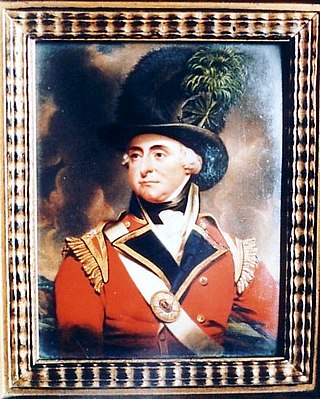
General Robert Manners was a British Army officer and Member of Parliament.
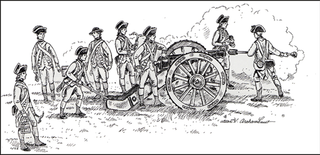
The 1st Continental Artillery Regiment, also known as Harrison's Continental Artillery Regiment, was authorized on 26 November 1776 as Colonel Charles Harrison's Continental Artillery Regiment. Raised for service during the American Revolutionary War, as originally organized, the regiment comprised 10 artillery companies from Virginia. Two of the artillery companies existed since early 1776. The regiment was first assigned to the Southern Department, but in March 1778 it was reassigned to General George Washington's main army. In August 1779, the unit was renamed the 1st Continental Artillery Regiment. It continued to serve with the main army until April 1780 when it was transferred to the Southern Department. In May 1780, Maryland artillery companies formally joined the regiment, making a total of 12 companies. In January 1781, the regiment was reorganized with 10 companies. Furloughed in the summer of 1783, the regiment was disbanded in November the same year. Elements of the regiment fought at Monmouth, Charleston, Camden, Hobkirk's Hill, Eutaw Springs, Yorktown, and Combahee River.
The 95th Regiment of Foot (Reid's) was an infantry regiment of the British Army.
The 88th Regiment of Foot was an infantry regiment in the British Army from 1779 to 1783, formed during the American Revolutionary War. It was raised in Worcestershire under Colonel Thomas Keating and saw service in Jamaica. It was disbanded in England in 1783 at the end of the war.
104th Regiment of Foot was a regiment of the British Army. The regiment had its origins in the New Brunswick Regiment of Fencible Infantry, a unit of fencibles raised for the defence of the colony of New Brunswick in 1803. Recruits were drawn from across British North America, Scotland, Ireland and existing British Army units. The regiment was formally entered into the establishment in 1806 with a strength of around 650 enlisted men but grew to almost 1,100 by 1808. In 1810 the regiment's officers requested that it join the British Army as a regiment of foot. This request was granted on 13 September 1810 and the unit was renamed the 104th Regiment of Foot.













